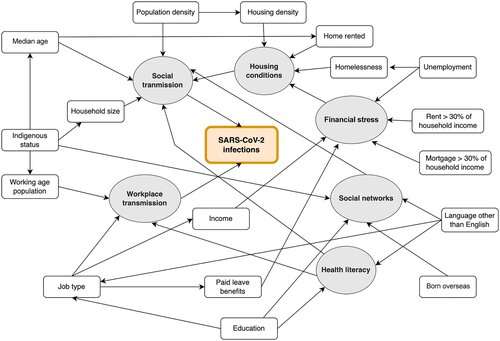Victoria's postcode lottery of COVID-19 cases

The incidence of SARS-CoV-2 infections was higher in Victorian postcodes with larger proportions of unemployed people, those without paid leave benefits, or those experiencing mortgage or rent stress, according to research published today by the Medical Journal of Australia.
Health, income, and education inequalities have been associated with variations in the local incidence of SARS-CoV-2 infections in the United States, but their impact in Australia has been less explored.
Researchers led by Dr. Christine Roder, an infectious disease researcher at Barwon Health and the Institute for Mental and Physical Health and Clinical Translation (IMPACT) at Deakin University, analyzed data about the incidence of SARS-CoV-2 in Victoria by postcode, between 1 March and 13 August 2020.
"During the study period, 15,482 SARS-CoV-2 infections with associated postcodes were recorded in Victoria," Roder and colleagues reported.
"Incidence was higher for metropolitan than regional postcodes (418.3 v 62 infections per 100,000 population).
"In regional postcodes, incidence rose with mean household size, unemployment proportion, and proportions for whom rent or mortgage repayments exceeded 30% of household income.
"In metropolitan areas, incidence increased with unemployment proportion and proportion without paid leave. Incidence also increased with proportion speaking languages other than English at home and with Indigenous Australian proportion."
Roder and colleagues wrote that their findings showed that "postcode-level socio-economic differences influenced the local incidence of SARS-CoV-2 infections in Victoria during 2020."
"Policies and health care reform that take social and economic inequalities into account could mitigate future waves of COVID-19, help target vaccination programs to people at particular risk, better prepare Australia for future pandemics, and improve the health and wellbeing of all Australians, wherever they live," they concluded.
More information: Christine Roder et al, Area‐level social and economic factors and the local incidence of SARS‐CoV‐2 infections in Victoria during 2020, Medical Journal of Australia (2022). DOI: 10.5694/mja2.51436





















